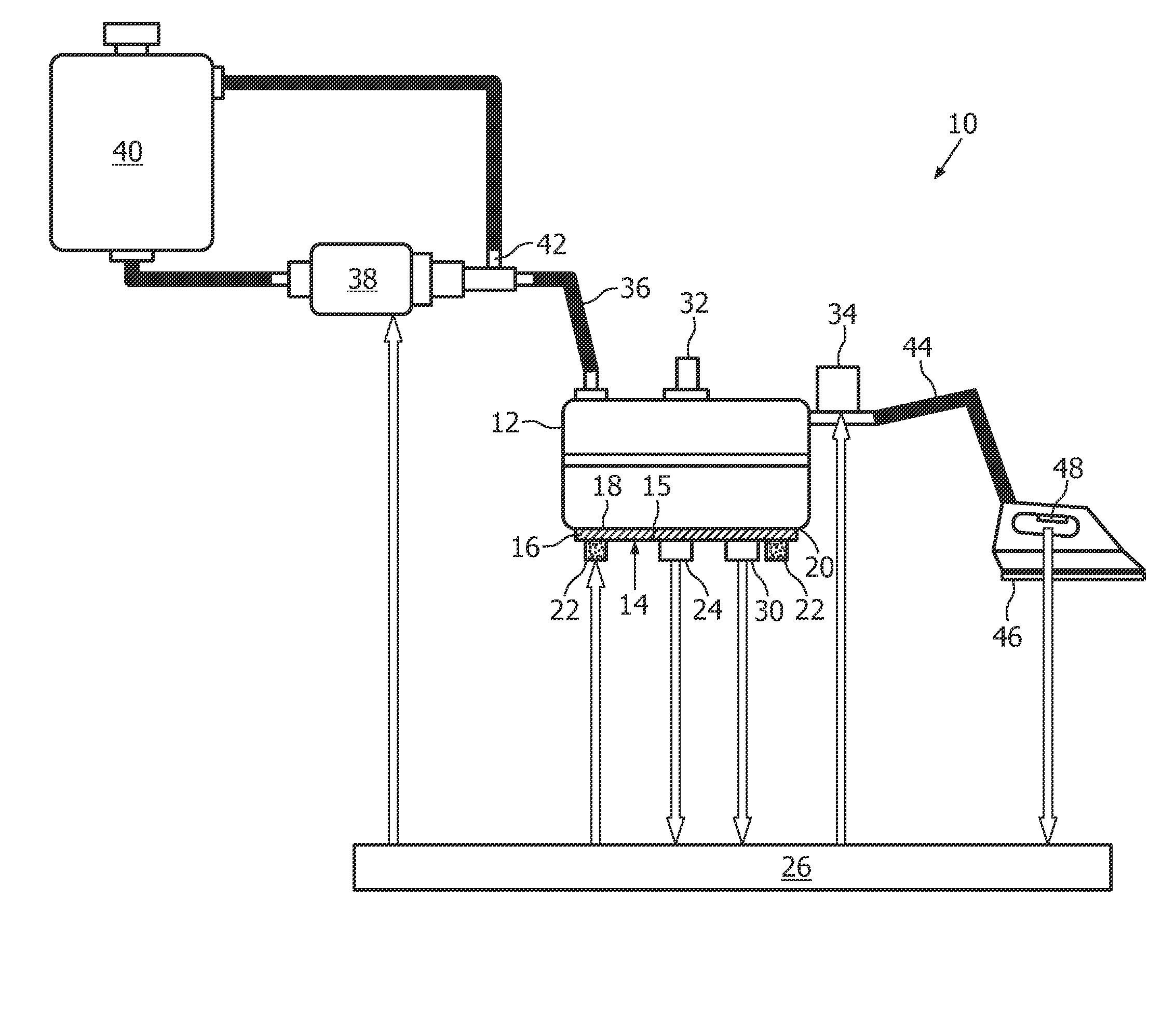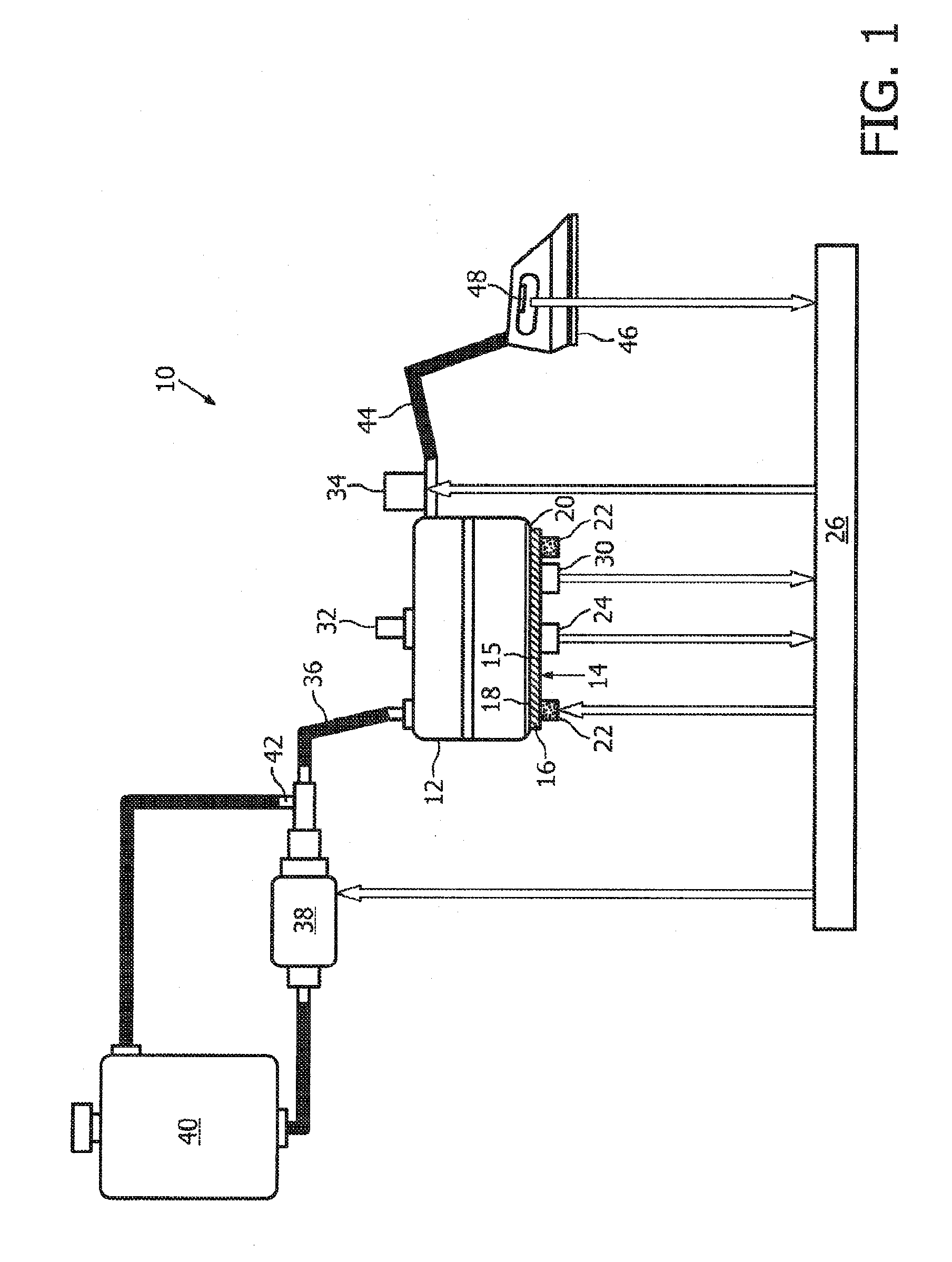Apparatus and method for generating steam
a technology of apparatus and steam, applied in the field of apparatus for generating steam, can solve the problems of insufficient heat transfer between the boiler shell and the heating plate, the disadvantage of attaching the temperature sensor at the bottom of the boiler shell, and the complicated forming of the shell, etc., to achieve good thermal conductivity, good processing properties, and low corrosion
- Summary
- Abstract
- Description
- Claims
- Application Information
AI Technical Summary
Benefits of technology
Problems solved by technology
Method used
Image
Examples
first embodiment
[0033]FIG. 3 shows a method of controlling the pressure of steam according to the invention. In step S20, the nominal temperature Tnom of water to be heated is set to a first temperature T1. In step S21, a number of N temperature cycles as described in connection with FIG. 2 are performed. In step S22, the nominal temperature Tnom is set to a second temperature T2, the second temperature T2 being higher than the first temperature T1. In step S23, M temperature cycles are performed at the higher nominal temperature T2. Afterwards, in step S24, the nominal temperature Tnom is lowered to a third temperature T3, the third temperature T3 being lower than the second temperature T2. After performing K temperature cycles, the process continues with step S20 or, alternatively, with step S22. Thus, a higher temperature level T2 is provided during M temperature cycles allowing the generation of a higher pressure range.
second embodiment
[0034]FIG. 4 shows a method of controlling the pressure of steam according to the invention. In step S30, the nominal temperature Tnom of water to be heated is set to a first temperature T1. Afterwards, in step S31, a—preferably not predetermined—number of temperature cycles as defined above is performed. During these temperature cycles, the activation of a steam trigger, i.e. the initiation of a steam output, and the activation of the water pump are monitored (S32). If one of the mentioned events takes place, the process continues in step S33. Otherwise, the monitoring continues in step S32. In step S33, the heating element is turned on and the water is heated. During this heating, several events are monitored. If one of the events takes place, the heating element is turned off. First, in step S34, the current temperature of the water, Tcurr, is compared with a maximum temperature Tmax. If the current temperature Tcurr exceeds the maximum temperature Tmax, the heating element is tu...
PUM
 Login to View More
Login to View More Abstract
Description
Claims
Application Information
 Login to View More
Login to View More - R&D
- Intellectual Property
- Life Sciences
- Materials
- Tech Scout
- Unparalleled Data Quality
- Higher Quality Content
- 60% Fewer Hallucinations
Browse by: Latest US Patents, China's latest patents, Technical Efficacy Thesaurus, Application Domain, Technology Topic, Popular Technical Reports.
© 2025 PatSnap. All rights reserved.Legal|Privacy policy|Modern Slavery Act Transparency Statement|Sitemap|About US| Contact US: help@patsnap.com



